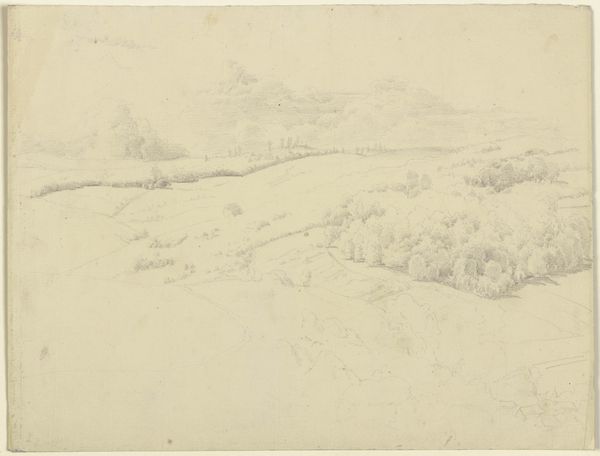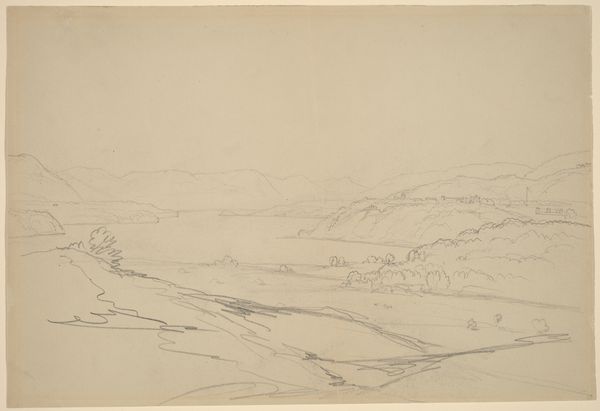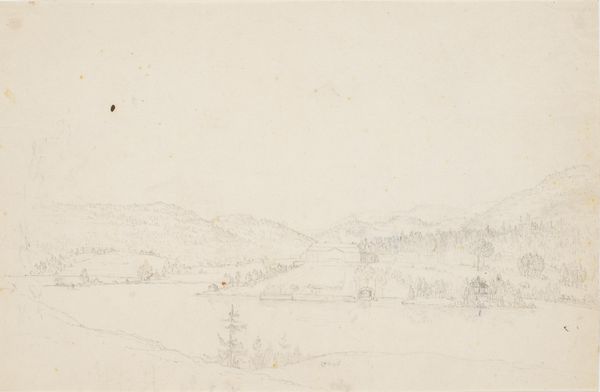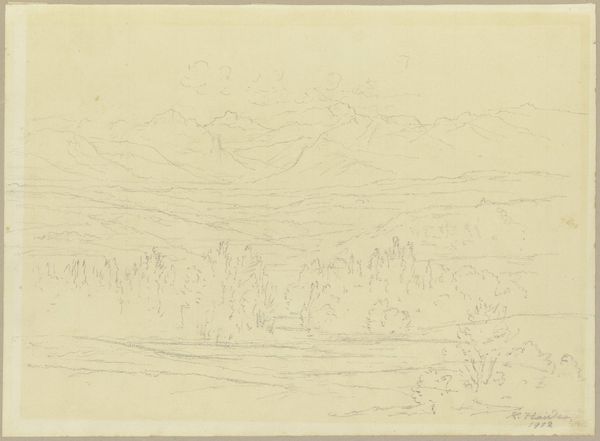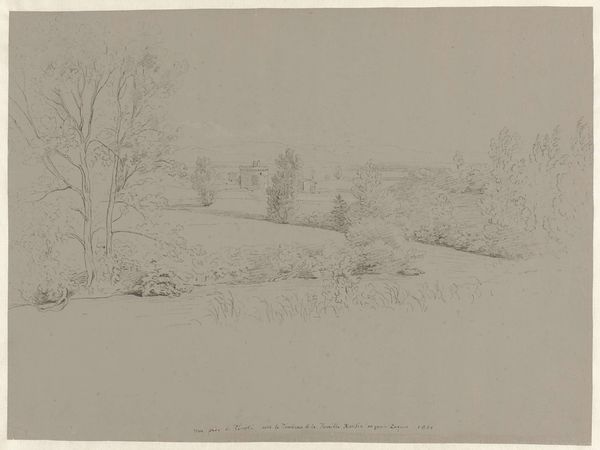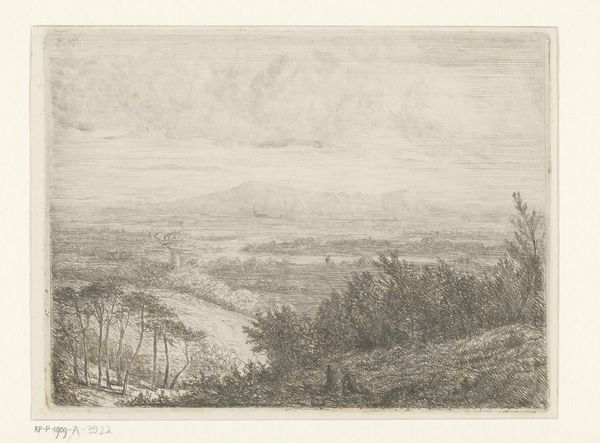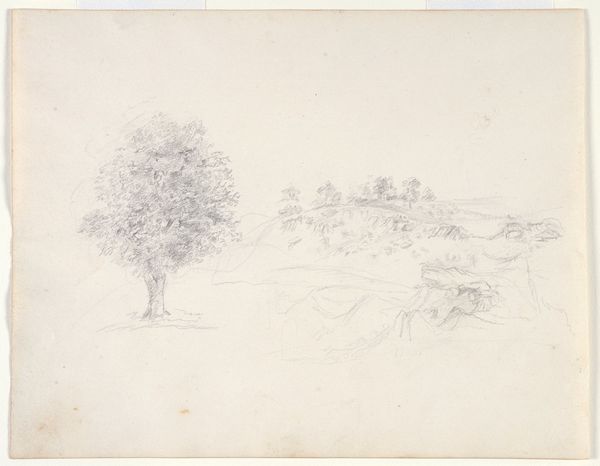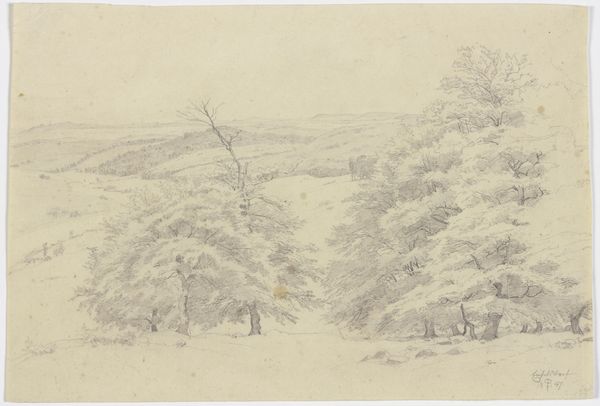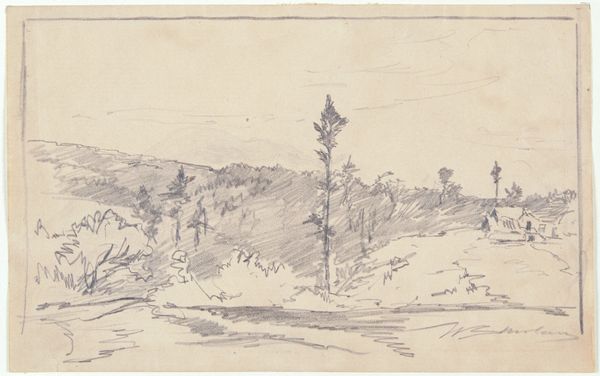
Dimensions: sheet: 30.4 × 48.4 cm (11 15/16 × 19 1/16 in.)
Copyright: National Gallery of Art: CC0 1.0
Jasper Francis Cropsey made this graphite on paper drawing, ‘The Hudson River at Hastings’, in 1885. Here we see the Hudson River, a site freighted with meaning in 19th-century America. The Hudson River School artists celebrated the landscape as a symbol of national identity and divine presence, a visual language closely tied to ideas of expansion and progress. This drawing, however, done later in Cropsey's career, possesses a quiet intimacy distinct from the grandiose paintings of his earlier years. The Hudson River School was not just a group of artists. It was an institution that shaped how Americans saw their environment, promoting a particular vision of nature as both sublime and ripe for development. Cropsey's work, like that of his contemporaries, played a role in constructing this narrative, and his later works may reflect a changing view of this landscape. To fully understand this work, we need to look into the archives of art criticism and exhibition records. By examining these, we can better understand the social and institutional contexts that shaped Cropsey's artistic vision, and how the meaning of the Hudson River evolved over time.
Comments
No comments
Be the first to comment and join the conversation on the ultimate creative platform.
